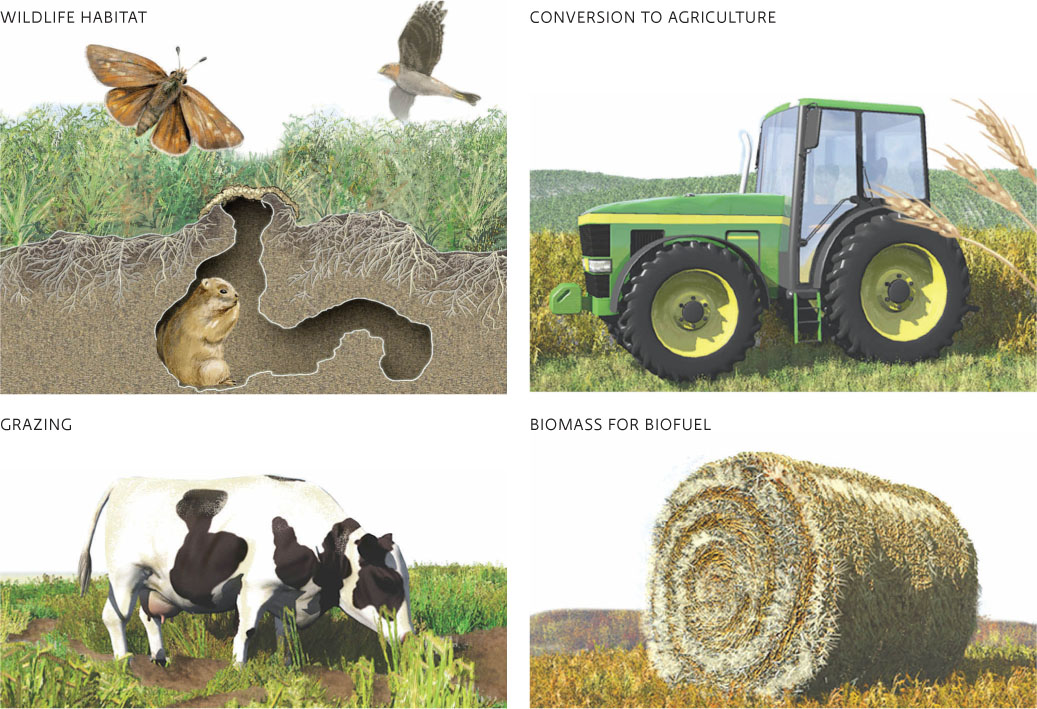Grasslands provide a wide range of important goods and services.
Though we might most often think of grasslands in terms of their human uses (pasture, farmland), they provide extremely important ecosystem services such as nutrient cycling, soil formation and protection, carbon sequestration, protection of surface waters, and provision of habitat for both year-round and seasonal wildlife. But it is also true that for thousands of years, grasslands—which cover about 40% of Earth’s surface and contain some of the richest soil in the world—have provided humans with a multitude of goods and services. In fact, most major cereal crops, including wheat, rye, barley, and millet, were originally derived, thousands of years ago, from grassland seedbeds. Today, scientists trying to develop disease-resistant crops continue to rely on the genetic material found in grasslands. Meanwhile, other scientists are perfecting ways to harvest grassland plants as an energy source. (See LaunchPad Chapter 32 for more on biofuels.)
KEY CONCEPT 27.2
Grasslands provide ecosystem services such as wildlife habitat and carbon sequestration, as well as being vitally important as farm- and ranchlands.
But the most widespread, human-centered use of grasslands is as food for large grazing herd animals. In addition to supporting countless wild ungulate (hoofed animals) grazer herds, a little more than half of the world’s grasslands—26% of the planet’s land surface—are used to graze more than 3 billion domestic livestock (mostly cattle, goats, and sheep). This type of grazing provides the primary source of food and income for some 2 million of the world’s poorest people. And while other livestock (like chicken and pigs) consume vast stores of grain that might otherwise go to humans, grazing animals are effectively converting food we cannot eat (grass) into food we can eat (meat and dairy). INFOGRAPHIC 27.2


How might the preservation of grasslands near agricultural fields help productivity of the croplands?
Maintaining healthy grasslands close to agricultural fields might help provide ecosystem services to the croplands such as pollination and pest control by providing habitat for native species that perform these functions.